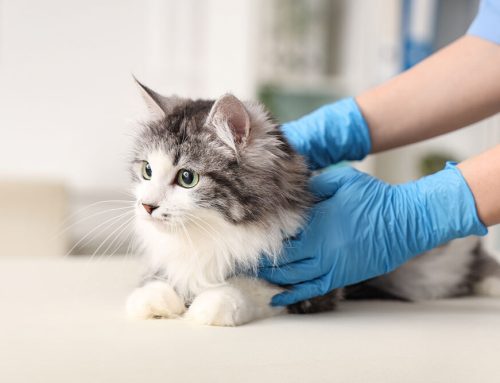Diabetes mellitus is not only a human disease, but is also becoming increasingly common in dogs and cats. Estimated to affect between 1 in 200 cats and 1 in 300 dogs, diabetes is one of the most common endocrine disorders in pets. While a diabetes diagnosis for your pet can be scary, there’s also good news—in many cases, diabetes can be successfully managed, and your pet can live a long and happy life. By learning more about how this disease affects your pet, and what you need to watch for during treatment, you can help your furry pal stay healthy.
How is diabetes in pets different from diabetes in people?
Pets suffer from diabetes the same way as people. In some cases, the pancreas loses the ability to produce insulin, which is known as insulin-deficient, or Type 1, diabetes. In other instances, the pancreas still produces insulin, but the body can’t use it, leading to insulin-resistant, or Type 2, diabetes. While most people either have Type 1 or Type 2 diabetes, cats and dogs are different. The thought used to be that dogs generally developed Type 1, whereas cats developed Type 2, but that is no longer the case, and classification is much more fluid among pets. Regardless of type, the body’s natural insulin can no longer move the energy found in glucose from the bloodstream to the body’s cells without insulin administration.
What causes diabetes in pets?
Diabetes development in pets has no single cause. Genetics can play a role, as miniature schnauzers, poodles, beagles, pugs, and Burmese cats seem most at risk. Some medical conditions, such as obesity, Cushing’s disease, and pancreatitis, can increase a pet’s diabetes risk. Long-term steroid use may also predispose your pet toward diabetes. While you can’t eliminate all the diabetes risk factors in your pet, you can promote a healthy weight through diet and exercise, which can mitigate potential disease development.
How will I know if my pet has diabetes?
Diabetes can slowly sneak up on your pet, and you may not notice a difference in their drinking, eating, and urinating habits for some time. The classic diabetes signs are known as the three P’s—polydipsia, polyuria, and polyphagia. Excessive thirst, urination, and hunger can be seen, along with weight loss, vomiting, and poor coat condition. Dogs may also develop cataracts, while cats may have an unusual gait or stance.
Diagnosis is fairly easy, and typically requires a blood test to check your pet’s glucose level, and a urinalysis to evaluate glucose spillover into the urine.
How can I manage my pet’s diabetes?
Diabetes management is a lifelong process, although some cats can go into remission with the proper diet and no longer need insulin injections. However, most pets will require once or twice daily insulin injections, prescription food, and careful monitoring to manage concurrent conditions and their diabetes.
What should I be concerned about with my diabetic pet?
Pets with diabetes are more prone to developing infections, such as skin issues, urinary tract infections, and dental disease. These conditions can also interfere with insulin metabolism, which can throw off their carefully regulated insulin therapy. Routine blood glucose curves, along with physical exams, will help monitor your pet’s health and response to insulin therapy, ensuring they remain at the correct dose.

You should be aware of diabetic ketoacidosis, a serious issue that can occur in diabetic pets when not enough insulin is available to control glucose levels, in turn triggering the production of ketone bodies from fat as a fuel source. While fine in an emergency, if glucose regulation is not restored, the acid/base balance in the body is disrupted and cannot maintain the proper fluid balance. Electrolytes become unbalanced, and may lead to heart arrhythmias and abnormal muscle function. If left untreated, diabetic ketoacidosis is fatal. Signs to watch for include:
- Lethargy
- Weakness
- Vomiting
- Excessive thirst and urination
- Decreased appetite
Another common issue occurs after too much insulin administration, often when a pet is not eating their full meal. If a pet receives a full insulin dose, but doesn’t eat, they can become dangerously hypoglycemic. Always ensure your pet eats before giving insulin, and decrease the dose as needed, based on the amount they eat of their calculated meal. If your pet develops hypoglycemia, you may see disorientation, confusion, weakness, appetite loss, tremors, and seizures. Accidents can also happen if family members double dose a pet with insulin, so keep a bottle of Karo syrup on hand for emergencies. If you notice any hypoglycemia signs in your pet, rub a teaspoon of syrup on their gums, and rush them to Homestead Animal Hospital.
With proper management, routine monitoring, and a dedicated family, diabetic pets can live long, happy, and comfortable lives. While a diabetes diagnosis can be scary, our team is here for you every step of the way.
Has your furry pal been draining their water dish and flooding their litter box, or perhaps having accidents inside? Contact our Homestead Animal Hospital team to schedule an appointment, to determine if diabetes is causing your pet’s excessive thirst and urination.
















Leave A Comment